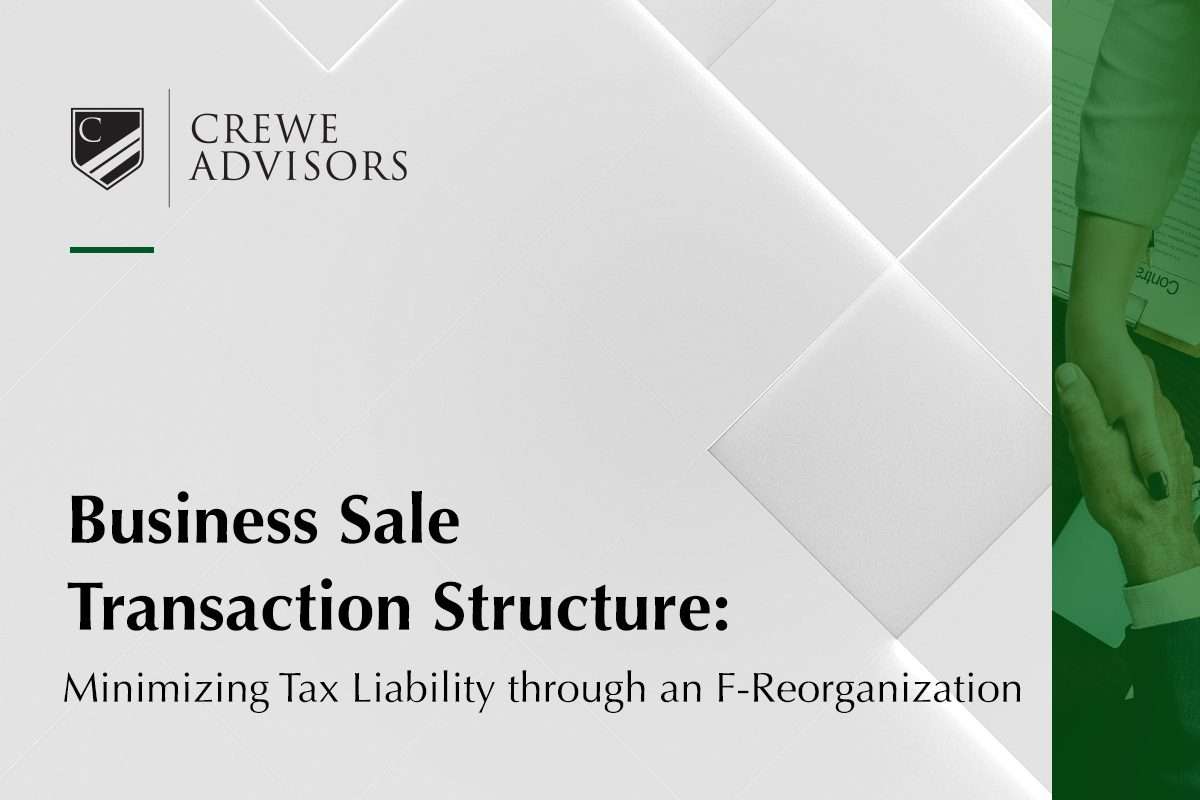As a business owner considering the sale of your company, it is critical to explore various strategies that could optimize one of the biggest transactions of your life. One such strategy to evaluate is the F-Reorganization, a tax-efficient method of merging corporations. Read on as we learn more about the basics of an F-Reorganization and discuss some of the pros and cons of this strategy.
An exceedingly important component of pre-exit planning includes structuring the transaction to maximize the Seller’s proceeds while also minimizing any potential tax consequences. A good place to start is reviewing how your company is organized and should be done well in advance of a contemplated sale.
In a world where private equity has become a major player in the M&A scene, Buyers continue to prefer asset sales over equity/stock sales. In a typical asset sale, the Seller retains possession of the legal entity, while the Buyer purchases the underlying assets of the company. This permits the Buyer to receive a “step-up” in depreciable basis on the assets purchased, which can result in higher deductions/reduced taxes to the Buyer as well as help improve cash flow of the business in the years following the transaction. In addition, an asset sale may ease the burden of any potential future liabilities on the Buyer related to product or warranty liability or lingering employee issues. On the flip side, asset sales may also result in some challenges to the Buyer as certain assets (including intellectual property, some contracts or permits) are more difficult to transfer. Conversely, from the Seller’s point of view, an asset sale may result in a higher tax liability due to depreciation recapture (as certain assets may be taxed at ordinary income tax rates instead of capital gains rates*).
When a transaction is structured as a stock purchase, making an election under IRC Section 338(h)(10) or Section 336(e) may enable the Buyer to treat the stock purchase like an asset purchase and receive a step-up in basis on the underlying assets. However, when one of these elections is made, the Buyer bears the risk that the target corporation’s S-election is invalidated. To mitigate this risk, many companies will employ an F-Reorganization strategy before the transaction.
Governed by IRC Section 368(a)(1)(F), an F-Reorganization allows for a tax-free merger or consolidation of two or more corporations. The primary objective of an F-Reorganization is to facilitate the combining of assets and operations of two or more entities into a single corporation without triggering immediate tax consequences. The steps involved in completing an F-Reorganization are as follows:
- The shareholders of the target S-corporation form a new corporation (NewCo)
- The shareholders contribute all of their shares in the target S-corporation into NewCo in exchange for all of NewCo’s shares
- The target S-corporation elects to be treated as a qualified subchapter S subsidiary and because the owners of NewCo are the target S-corporation’s shareholders, the target company is disregarded by the IRS
- The target S-corporation is then converted to a limited liability company whose sole member is NewCo
Once the F-reorganization is complete, the Buyer may purchase the equity of the target company (which is now an LLC) without the risk of jeopardizing the target company’s s-election.
The main features of this type of structure FOR THE SELLERS include:
- Increased tax efficiency – an F-reorg allows the sellers to defer gain recognition on the portion of the company they roll into equity in the new company (sellers only have to recognize gain immediately on any cash they receive in the transaction)
- It permits more flexibility in deal structure. For example, business owners may negotiate when consideration is received, the timing of payments and post-transaction ownership structure
- It negates the requirement to get third-party consent on the transfer or licenses, etc. (these things may cause issues during due diligence and can cause delays in a transaction)
- Executing an F-Reorganization can involve a complex transaction structure. The process requires careful planning, legal considerations, and compliance with regulatory requirements. There may be increased legal and other costs associated with effectuating the strategy
- The risk of a properly executed F-reorganization is often carried by the seller
*Due to depreciation recapture upon sale





